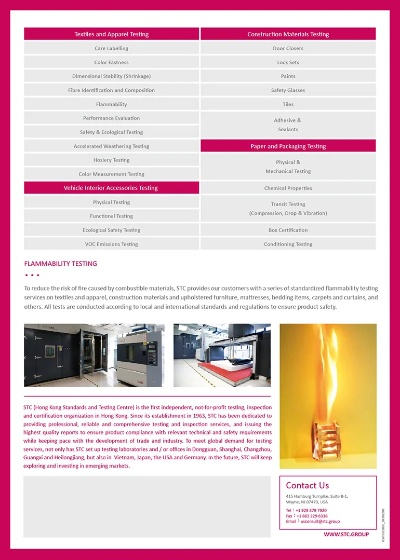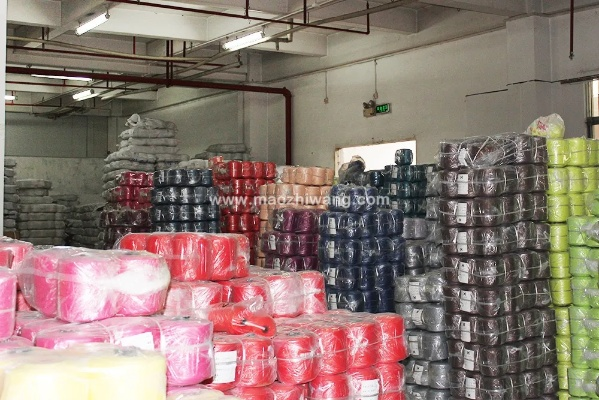A Comprehensive Guide to Textile Inspection and Testing
This comprehensive guide to textile inspection and testing provides a thorough overview of the various methods and techniques used to assess the quality, functionality, and performance of textile products. From basic inspections such as color consistency and fabric thickness to more complex tests like tear resistance and flame resistance, this guide covers all the essential aspects of textile testing.,The guide begins with an introduction to the importance of proper textile inspection and testing in maintaining product quality and consumer safety. It then goes on to discuss the different types of textile materials, including cotton, synthetic fibers, and blends, and their respective characteristics and testing requirements.,The guide provides detailed information on how to perform various types of inspections, including visual examination, weight measurement, and tensile strength testing. Additionally, it covers important considerations for sample preparation and instrumentation, as well as tips for troubleshooting common issues during testing.,Finally, the guide concludes with a discussion of the benefits of regular textile inspection and testing, as well as recommendations for selecting appropriate testing methods based on the specific needs of the industry.

Introduction: Textile products are an essential part of our daily lives, from clothing to bedding, from sportswear to industrial fabrics. As such, it's crucial for manufacturers to ensure the quality and safety of their textiles before they hit the market. In this guide, we will delve into the various methods used for textile testing, covering both manual inspections and more advanced laboratory tests.
Manual Inspections:
-
Color Matching: This is the most common form of inspection, whereby samples are compared to a standard color chart or reference sample. It's important to note that color matching can vary depending on the lighting conditions and the viewing angle.
-
Size and Fit: For apparel and other textiles, size measurements are critical. The fit of the product should be consistent with the manufacturer's specifications.
-
Material Structure: This involves visually assessing the texture, density, and overall structure of the fabric. For example, a cotton shirt might have a smoother finish than a denim jacket.
-
Quality Control Points: These are specific areas of the fabric that need to be inspected for defects such as holes, tears, frays, or loose threads.
-
Finishing: The level of finishing (like embossing, embroidery, or lace) can affect the appearance and durability of the product.
Laboratory Tests:
-
Moisture Resistance: This test measures how well the textile can resist moisture penetration.
-
Flammability: This test evaluates the potential for fire hazards in textiles.
-
Dyeability: This test checks how easily dyes can penetrate the fabric and adhere to the fibers.
-
Stress Testing: This simulates the wear and tear of the fabric under stress, like when it's being worn by someone.
-
Chemical Resistance: This test measures how resistant the fabric is to chemicals like acids and alkalis.
Example Case Studies:
-
A company producing high-quality linens was found to have a significant number of defects during a routine inspection. They implemented a new quality control program, which included regular manual inspections and mandatory lab testing. As a result, the defect rate dropped significantly, leading to improved customer satisfaction and increased sales.
-
A textile manufacturer was dealing with complaints about poor color consistency in their garments. After conducting a thorough review of their color matching process, they discovered that the color charts used were outdated and not representative of current fashion trends. By updating their color charts and implementing a more rigorous color matching system, they were able to improve the consistency of their colors across different batches.
Conclusion: In conclusion, textile inspection and testing play a crucial role in ensuring the quality and safety of our clothing and other textile products. By utilizing both manual inspections and advanced laboratory tests, manufacturers can identify and address any issues early on, minimizing the risk of defects and customer complaints. Remember, investing in proper inspection and testing procedures is not just about meeting legal requirements but also about building trust with your customers and maintaining brand reputation.
在纺织品检测过程中,我们记录了大量的笔记图片,这些图片不仅展示了检测流程,还提供了具体的案例分析,本篇文章将通过图文并茂的方式,为您详细解读纺织品检测的各个环节。
检测流程概述

材料准备
在纺织品检测前,我们需要准备一系列的材料,包括样品、检测标准、检测设备等,这些材料是确保检测准确性的基础。
样品采集与处理
样品采集是纺织品检测的重要环节,我们需要按照规定的流程和方法采集样品,样品处理包括清洗、整理等步骤,以确保样品的质量和完整性。
实验室测试
实验室测试是纺织品检测的核心环节,包括各种物理、化学、生物等测试方法,这些测试方法可以帮助我们了解样品的性能和质量。
案例分析
纺织品纤维成分检测
某公司采购了一批纺织品样品,需要进行纤维成分检测,在检测过程中,我们首先对样品进行了清洗和处理,然后根据检测标准,选择了合适的测试方法进行测试,检测结果显示该批纺织品的主要纤维成分符合标准要求。
纺织品环保性能检测
某地区政府为了确保纺织品的质量和环保性能,要求对纺织品进行环保性能检测,在检测过程中,我们采用了各种环保性能测试方法,如燃烧法、吸水性测试等,以确保样品的环保性能符合标准要求,我们还对检测结果进行了统计分析,为政府提供了有力的数据支持。
图表说明
以下是纺织品检测流程中一些关键的图表说明:
(请在此处插入图表)
英文案例说明
英文案例一:纺织品纤维成分检测流程图
- 材料准备:准备样品、检测标准、检测设备等。
- 样品采集:按照规定流程和方法采集样品。
- 实验室测试:选择合适的测试方法进行测试,如纤维成分分析仪等。
- 结果呈现:将测试结果以图表形式呈现,便于分析和比较。
英文案例二:纺织品环保性能检测流程图
- 材料准备:准备样品、环保性能测试标准、环保性能测试设备等。
- 样品采集与处理:按照规定的流程和方法采集样品并进行处理。
- 环保性能测试:采用各种环保性能测试方法进行测试,如燃烧法、吸水性测试等。
- 结果呈现:将测试结果以统计图表形式呈现,便于分析样品在不同环境下的表现。
纺织品检测是确保纺织品质量的重要环节,通过本文的介绍和案例分析,我们可以更好地了解纺织品检测的流程和具体操作,在实际操作中,我们还需要不断总结经验教训,提高检测效率和准确性。
Articles related to the knowledge points of this article:
The Standardization of Textile Dimensions and Its Impact on Global Trade



